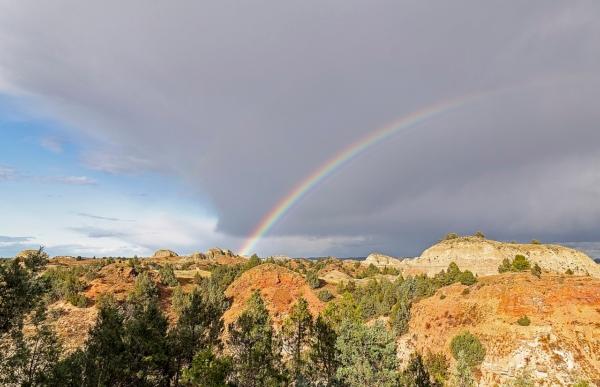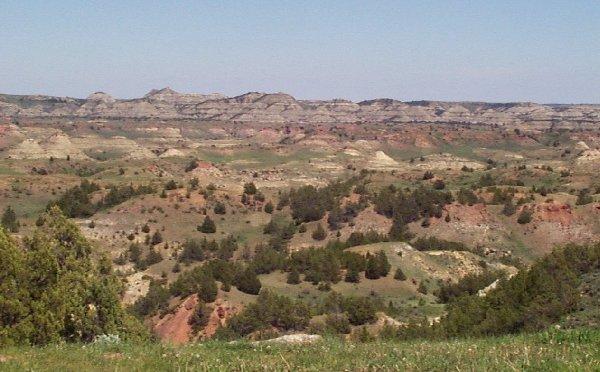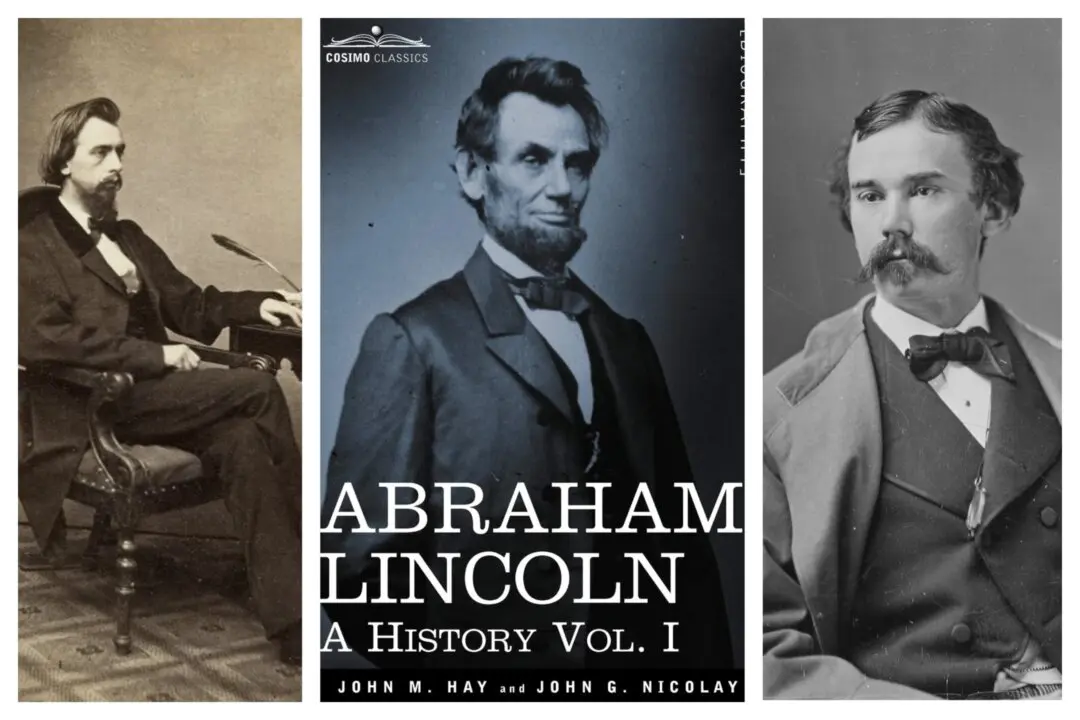The dry, sand-hued buttes rise from grassy canyons, and sagebrush dots the rugged North Dakota landscape. I am visiting the territory where “the romance” of Theodore Roosevelt’s life began. My renovated 1969 Shasta camper (with wings) navigates the winding roads of the national park named for the 26th U.S. president. It was Roosevelt’s escape to this wilderness in 1884, after the death of his first wife and mother on the same day, that transformed him. In fact, he famously said, “I would not have been President had it not been for my experience in North Dakota.”

Rainbow over the badlands. Acroterion/CC BY-SA 4.0





